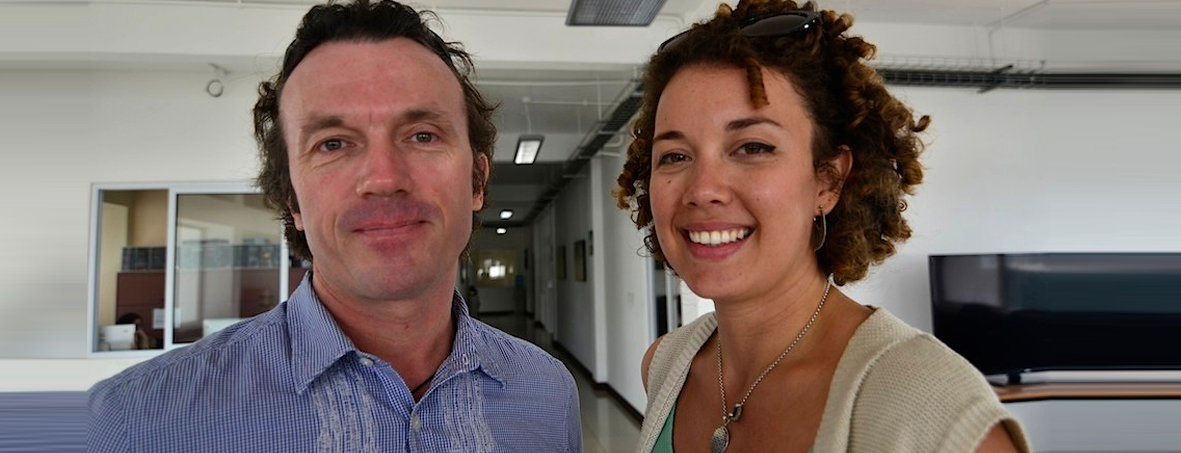
Alternative power sources are, often, rather indulgently, referred to as the power sources of the future; for instance, despite the proven efficacy of solar power there aren’t as many takers as there should be given the prospects of a power/fuel crunch. Even when it comes to solar-powered e-vehicles – scooters, cars and such, there is a certain amount of scepticism surrounding it. American journalist, traveller and adventurer Thomas Tomczyk says, “The future is here and the technology (alternate power resources) works now.”
He would know. He travelled 28,000 km from Philadelphia to Patagonia, on a battery-powered bike which took him nine months.
That adventure done, he and Guatemalan film maker Ana Cosenza would set off on another, the Electric River Odyssey, this time in India down the Ganga on a solar-powered boat. The expedition begins at Rishikesh and would wind its way down the Ganga, past places such as Kanpur, Varanasi, Allahabad, Kolkata till it reaches Sagar island in the Bay of Bengal. Along the journey, that will take more than a month, the duo hopes to meet and interact with people.
The e-bike trip across America was the longest journey ever undertaken on an e-bike (electric charge) and the bike, his website says, was not equipped to travel more than 90 miles (approximately 145 km) on a single charge. Along the way, he met an interesting mix of people living unconventional lives. These were his ‘power sources’. Documenting the journey, Ana travelled with him on a part of the journey. The series, as a six-part documentary, has been made for American television networks. The producer, for their documentary series is Emmy-award winning Frank Martin.
For the couple, the 2,000 km journey across the Ganga is more about reaching the destination – it is about collecting and exchanging experiences. If on the last trip they sought to redefine energy, how it is perceived, on this trip they will enquire what defines wealth for the people living along the river. They also hope to explore, Ana says, three aspects of a people – spiritual wealth, inventions that have stood the test of time (such as Kochi’s Chinese fishing nets) and how jugaad (low cost solution) works. What they film along the way will be made into a documentary. The ghariyal sanctuary, the Sunderbans ( “hopefully not get eaten by tigers” she adds) and other places of interest. They also intend to find and talk to people about the conservation of the river.
They have been planning/preparing for the trip for the past year or so. They have read the books, studied the maps and made the preparations. But this isn’t Thomas’ first trip. He has been here a few times before, starting in 1996. The last few times, he was on riding bikes – when he went to the Kumbh mela and rode from Leh to Thiruvananthapuram and from Jaisalmer to Arunchal Pradesh.
Why the Ganga? “There is a tradition of people travelling the Ganges. Since the 60s people have been doing this journey, for instance, Sir Edmund Hillary travelled the course and wrote From the Ocean to the Sky about it. Only that he travelled in powerboats and we will, silently, in solar powered boats,” Thomas says.
Boats because “One gets old just sitting on a bike!” he jokes. “This time there will definitely more space,” chips in Ana. The last time riding pillion on a bike with 70 kilos of luggage strapped was cramped. Thomas once even rode from South Africa to Poland.
The couple is in Kochi for the fitting of their boat with solar panels, by city-based TeamSustain, which will power the batteries. They bought the inflatable boat from Pune and brought it here. They found Team Sustain after much research. The boat was assembled in less than three to four days, says George Mathew of Team Sustain. It is a feat of engineering, Mathew agrees, “We had to think outside the box.” The panels are mounted on a frame on the boat.
“We will track the journey via GPS and monitor the solar charge through a unit inside the boat plus we have telecom towers being operated remotely to monitor the progress. And we have ensured that we know technicians along the way who can help if there is a problem. There will be constant communication and tech-support 24/7,” Mathew says. The boat will be sent to Rishikesh. The journey comes with it’s set of challenges. “Cloudy days!” Thomas says with mock seriousness. Pollution is a concern as also water levels and river flow, which is why they opted for an inflatable boat. “If we are unable to navigate the stretch then fold it and drive.” As my eyes widen, Mathew says, “there are two wheels, in case it needs to be tugged onto the shore.” On what drives them to such adventures, Ana says, “Thinking out the box, sustainability (of resources) and adventure!”
They also hope to explore three aspects of a people – spiritual wealth, inventions that have stood the test of time.